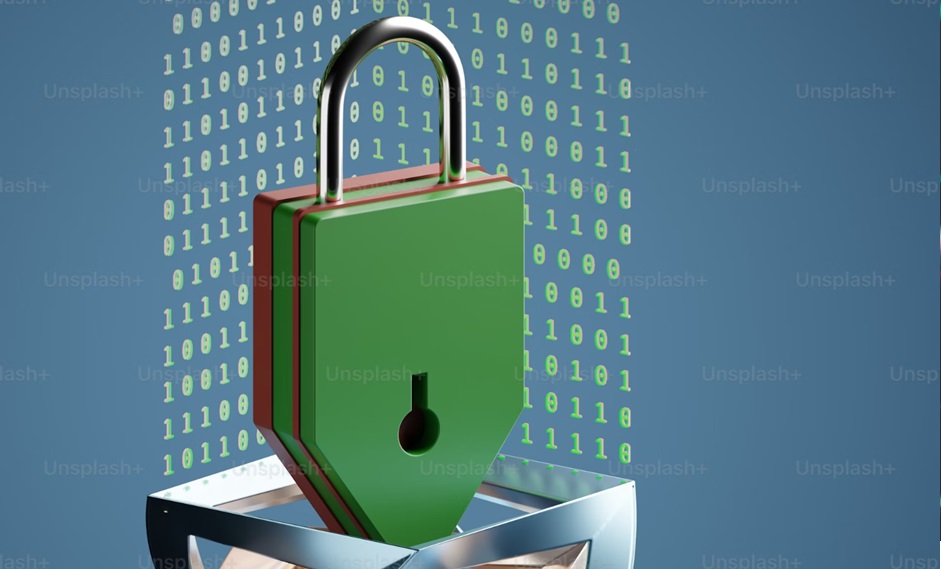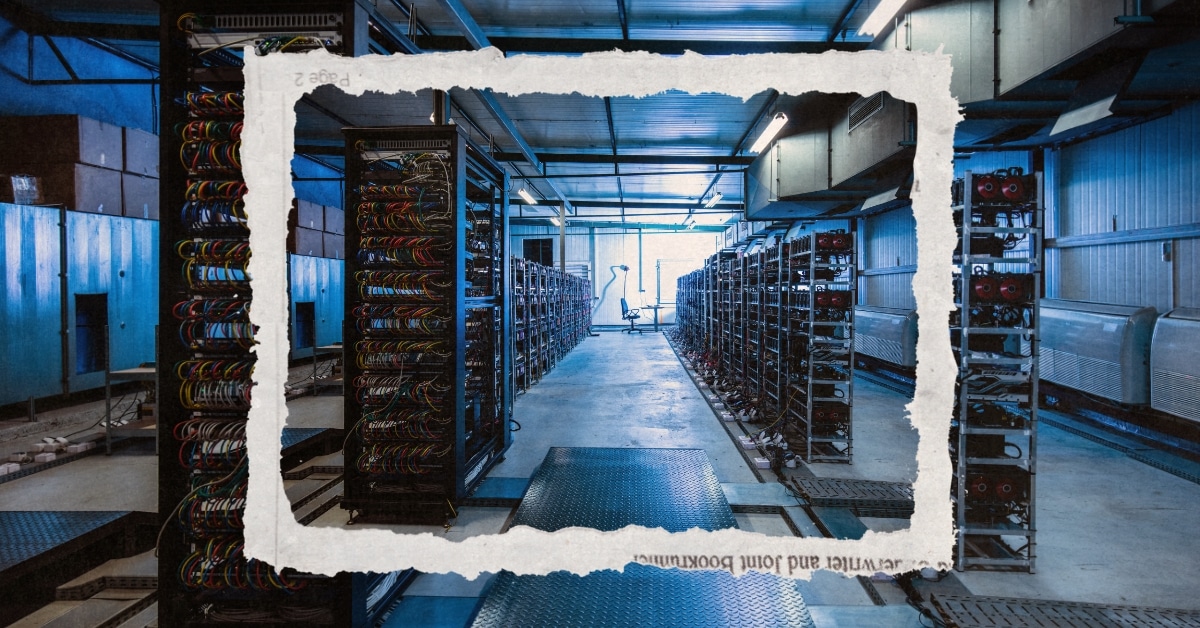News
Come il furto di criptovaluta della Corea del Nord sostiene gli obiettivi di politica estera

introduzione
Il lancio della Corea del Nord ancora un altro Il missile balistico intercontinentale (ICBM) nel febbraio del 2023 mostra progressi senza precedenti nella capacità tecnologica, sfidando le aspettative per un paese sotto una forte forza delle Nazioni Unite (ONU) sanzioni. La Corea del Nord ha sviluppato tali capacità in parte rubando miliardi di criptovalute. Nel 2022, la Corea del Nord eseguito più furti di criptovaluta e acquisizione di risorse digitali che mai. Il furto mirato di criptovaluta da parte della Corea del Nord contribuisce al suo obiettivo di politica estera di proliferazione dei missili balistici, che altrimenti probabilmente rimarrebbe irraggiungibile senza una riforma politica ed economica globale. Gli Stati Uniti dovrebbero scoraggiare la Corea del Nord organizzando una coalizione e sostenendo le capacità di difesa informatica degli stati che sono spesso presi di mira dagli attacchi informatici della Corea del Nord.
Lo sviluppo delle capacità informatiche della Corea del Nord
Valutazioni convenzionali della Corea del Nord spesso raffigurare come tecnologicamente sottosviluppato E dispotico, ma tali rappresentazioni possono semplificare eccessivamente la realtà. Il regime nordcoreano, costretto dalla necessità di valuta forte, cominciò a svilupparsi moderne capacità informatiche a metà degli anni ’90. Comprendendo il potenziale all’interno del regno informatico di ottenere informazioni dai nemici e proteggere la valuta fiat per sostenere i suoi programmi di armi, Kim Jong-il iniziato formazione informatica presso prestigiose università di Pyongyang. Dopo aver finito l’università, i tirocinanti furono inviati all’estero guadagnare soldi per il governo nordcoreano. A questi tirocinanti è stato assegnato il compito pirateria software e vendendolo a clienti cinesi o sudcoreani. Il 90% di questo denaro è stato dirottato al regime di Kim Jong-il.
Trasformazione della capacità informatica della Corea del Nord 2009 con la costituzione dell’Ufficio Generale di Ricognizione (RGB). L’RGB è quello del governo nordcoreano intelligence straniera primaria agenzia e consolida vari gruppi di intelligence governativa in un’unica agenzia di intelligence. Incaricato della raccolta di informazioni di cyber intelligence e delle operazioni clandestine, l’RGB ha svolto un ruolo chiave nell’orchestrazione degli attacchi informatici. Dal 2009 è nata la RGB più gruppi di hacker, il più noto è il Gruppo Lazarus. Altri gruppi includono Andariel, BlueNoroff, ScarCruft e Kimsuky. Gli attori informatici di talento di questi gruppi hanno acquisito illecitamente criptovaluta attraverso attacchi ransomware, violazioni di siti Web e infiltrazioni negli scambi di criptovaluta. Questi fondi vengono poi convogliati al governo nordcoreano e spesi in armi.
La Corea del Nord acquisisce illecitamente criptovaluta hackerando gli scambi di criptovaluta e rubando criptovaluta e altre risorse digitali. Gli scambi di criptovaluta fungono da piattaforme per le valute digitali con una supervisione minima. L’apice dell’acquisizione illecita di criptovalute da parte della Corea del Nord si è verificato nel 2022. trapelato Un rapporto delle Nazioni Unite stima che quell’anno gli autori informatici legati alla Corea del Nord abbiano rubato 630 milioni di dollari in risorse digitali. Tuttavia, esperti indipendenti di sicurezza informatica di Chainalysis hanno scoperto che i criminali informatici legati alla Corea del Nord, in particolare quelli associati al gruppo Lazarus, avevano rubato un stimato 1,7 miliardi di dollari nel 2022.
Sempre nel 2022, gli hacker nordcoreani hanno violato Harmony, a blockchain che facilita il scambio di token, stablecoin (una criptovaluta ancorata a un asset di riferimento come USD) e token non fungibili (NFT). Questa violazione ha comportato il furto di una cifra sbalorditiva di 100 milioni di dollari in criptovaluta. Gli hacker usato UniswapUN scambio decentralizzato che consente transazioni dirette di criptovaluta peer-to-peer, per convertire asset basati su Ethereum in 85.837 Ether (ETH). Successivamente, questo ETH ha subito un processo noto come “Tornado”, a mixer di criptovaluta servizio spesso utilizzato per oscurare l’origine e la proprietà dei fondi e riciclare i proventi di un crimine.
La società di sicurezza informatica Elliptic collegato l’attacco al Gruppo Lazarus, sottolineando che i metodi utilizzati per hackerare e riciclare i fondi rubati portavano la firma distintiva del gruppo. All’inizio del 2023, il Federal Bureau of Investigation degli Stati Uniti ha pubblicato un rapporto dettagliato confermando il coinvolgimento del Gruppo Lazarus nel furto di Ether per un valore di 100 milioni di dollari dall’Horizon Bridge di Harmony, corroborando il rapporto iniziale di Harmony redatto il 24 giugno 2022.
Furto di criptovaluta per raggiungere obiettivi di politica estera
La Corea del Nord, come sottolineato da Kim Jong-un nel suo discorso di Capodanno del 2023, ha un obiettivo politico fondamentale: aumentare la produzione di armi nucleari e sviluppare nuove armi nucleari. a combustibile solido ICBM come sistemi di lancio. Tuttavia, acquisire la valuta fiat necessaria per facilitare questo obiettivo è stato difficile. Dal 2006 la Corea del Nord è soggetta alle sanzioni dell’ONU. Tali sanzioni hanno causato problemi macroeconomici alla Corea del Nord. Secondo Secondo la Heritage Foundation, l’afflusso di investimenti diretti esteri (IDE) della Corea del Nord nel 2022 è stato di soli 10 milioni di dollari, mentre il suo PIL (a parità di potere d’acquisto) ha registrato una crescita composta del -1,9% negli ultimi cinque anni. Banca di Corea della Corea del Sud riportato una contrazione dello 0,1% del PIL della Corea del Nord nel 2021.
Date tali sfide economiche, la Corea del Nord usato l’acquisizione illecita di criptovaluta per sostenere la produzione di armi. L’acquisizione illecita di risorse digitali ha fornito 3 miliardi di dollari tra il 2017 e il 2023 all’economia della Corea del Nord secondo gruppo di esperti delle Nazioni Unite, in particolare se confrontato con gli afflussi di investimenti diretti esteri (IDE). Diventa quindi sempre più evidente che la Corea del Nord ha in parte finanziato i suoi sistemi d’arma avanzati attraverso criptovalute rubate.
La Corea del Nord ha dichiarato che uno dei suoi principali obiettivi politici è quello di sviluppare ulteriormente le armi, sia nucleari che convenzionali, per garantire la sicurezza dello Stato. Il regime di Pyongyang rimane soggetto a forti sanzioni, ma il furto di criptovalute offre un modo per finanziare lo sviluppo di queste armi. Di conseguenza, resta probabile che il furto di criptovaluta nordcoreano prolifererà in futuro.
Scoraggiare la Corea del Nord
La criptovaluta rubata è diventata un flusso di entrate fondamentale per la Corea del Nord. Tuttavia, le sue proprietà uniche come attività finanziaria che opera indipendentemente del controllo governativo in molte giurisdizioni ne rendono difficile il monitoraggio. Inoltre, il assenza di un ente centrale di regolamentazione internazionale per le criptovalute ha lasciato delle vulnerabilità nel settore delle risorse informatiche, che i criminali informatici sfruttano a scopo di lucro.
Sono iniziati i tentativi di scoraggiare gli attacchi informatici nordcoreani In 2017, quando gli Stati Uniti attribuirono pubblicamente l’attacco ransomware WannaCry 2.0 alla Corea del Nord. Nel 2018, il Dipartimento di Giustizia degli Stati Uniti ha ritenuto la Corea del Nord responsabile di una serie di ulteriori attacchi informatici, tra cui l’attacco informatico del 2014 alla Sony Pictures e il furto informatico alla banca centrale del Bangladesh del 2016. Nominando gli attori, gli Stati Uniti e i loro alleati speravano di scoraggiare i criminali informatici nordcoreani. Tuttavia, la semplice identificazione degli attori coinvolti non ha scoraggiato efficacemente la criminalità informatica.
Nel 2022, il Federal Bureau of Investigations e il Dipartimento del Tesoro degli Stati Uniti hanno adottato un approccio più concertato per ostacolare le attività illecite della Corea del Nord. Il 14 aprile 2022, il Dipartimento del Tesoro degli Stati Uniti aggiunto tre portafogli Ethereum utilizzati dal Gruppo Lazarus, incluso un portafoglio usato nel cielo Mavis rapina, al suo elenco di attività finanziarie sanzionate. Nell’agosto 2022, il Tesoro degli Stati Uniti sanzionato il mixer virtuale di criptovalute Tornado Cash, che aveva partecipato all’attacco all’Horizon Bridge e aveva riciclato oltre 455 milioni di dollari rubati da attori nordcoreani dal 2019. Anche Blender.io, un altro mixer di criptovalute, era sanzionato dopo aver aiutato il gruppo Lazarus a riciclare 20,5 milioni di dollari dall’attacco a Sky Mavis. Sfortunatamente, l’imposizione di sanzioni finanziarie mirate ha un impatto limitato, poiché gli attori nordcoreani malintenzionati non hanno i loro beni negli Stati Uniti o in un paese alleato, come invece fanno. risorse virtuali. Pertanto, le sanzioni probabilmente non hanno conseguenze finanziarie immediate per lo specifico trasgressore o per i gruppi di hacker in generale.
La Corea del Nord si rivolge prevalentemente alle imprese della regione Asia-Pacifico, dove la maggior parte dei paesi lo ha fatto infrastrutture di sicurezza informatica limitate E inadeguato risorse legislative per rispondere in modo efficace. Gli sforzi per contrastare la Corea del Nord spesso dipendono dal coinvolgimento degli Stati Uniti, impedendo contromisure regionali efficaci. Anche la Corea del Sud, paese tecnologicamente avanzato, ha faticato a contrastare gli attacchi informatici nordcoreani (come Gruppo di esperti delle Nazioni Unite spiegato) nonostante introdurre e approvare leggi per regolamentare gli scambi di criptovaluta. Di conseguenza, è imperativo un approccio più agile e deciso per scoraggiare la Corea del Nord.
Gli Stati Uniti dovrebbero collaborare con altre nazioni per rafforzare le capacità di sicurezza informatica nei paesi che ne sono sprovvisti. Ciò richiederebbe la conclusione di accordi multilaterali per sviluppare standard globali per combattere le minacce informatiche della Corea del Nord. Ad esempio, gli Stati Uniti potrebbero formare una coalizione di risposta congiunta in grado di rispondere tempestivamente alle intrusioni informatiche in uno qualsiasi degli Stati membri. Potrebbe anche includere la formazione per garantire che gli standard siano condivisi tra i paesi.
Conclusione
L’acquisizione illecita di criptovaluta consente alla Corea del Nord di mitigare gli impatti negativi delle sanzioni e di finanziare le sue ambizioni nei programmi di armi nucleari e missili balistici. Considerando i rischi relativamente bassi associati al prendere di mira gli scambi di criptovaluta, gli autori delle minacce informatiche nordcoreane probabilmente continueranno queste attività andando avanti.
Ostacolare gli sforzi di cyberfinanziamento della Corea del Nord richiede uno sforzo concertato e coordinato che coinvolga più paesi. Una risposta collaborativa di questo tipo dovrebbe comprendere gli stati più piccoli dell’Asia-Pacifico, molti dei quali potrebbero essere alle prese con infrastrutture limitate e richiedere assistenza per rafforzare le proprie capacità di sicurezza informatica. Si tratterebbe di uno sforzo a lungo termine, in particolare nelle giurisdizioni in cui il mantenimento di una forza informatica ben equipaggiata e ben addestrata richiede investimenti sostanziali. Molti degli attacchi informatici della Corea del Nord si verificano nel sud-est asiatico o nell’Asia meridionale, dove le difese informatiche rimangono relativamente deboli. Tuttavia, la cooperazione multilaterale rappresenterebbe un passo fondamentale verso il contenimento dei guadagni finanziari che alimentano le ambizioni strategiche della Corea del Nord nel regno informatico.
…
Dylan Stent è un Ph.D. candidato alla Victoria University di Wellington. Il suo studio di dottorato analizza la politica di unificazione della Corea del Sud dalla fondazione del paese fino alla fine della presidenza di Lee Myung-bak nel 2013, sostenendo che la politica ha mostrato nel tempo una maggiore coerenza rispetto a quanto suggerisce la saggezza convenzionale. Dylan ha pubblicato articoli su una serie di argomenti della Corea del Sud e del Nord che vanno dalle minacce informatiche nordcoreane, alla politica interna sudcoreana e alle politiche di unificazione della Corea del Sud. Può essere raggiunto a dylan.stent@vuw.ac.nz.
Credito immagine: Wikimedia Commons
News
US Cryptocurrency Rules Delayed by ‘Never-Ending’ Lawsuits

Ripple CEO says cryptocurrency industry still seeking regulatory clarity from US
Speaking to Bloomberg News on Wednesday (July 17), Author: Brad Garlinghouse he said America is behind behind other countries which have already adopted cryptocurrency regulations.
“What we’re seeing, where it’s the UK, Japan, Singapore… even the European Union, more than two dozen countries have come together to provide a framework for cryptocurrency regulation,” Garlinghouse said.
“It’s frustrating that we as a country can’t get that regulatory framework in place. And instead, we have this never-ending lawsuit coming from the SEC that doesn’t really address the problem.”
Ripple has been the target of some of these legal disputes. Securities and Exchange Commission (SEC) sued the company in 2020, accusing it of conducting a $1.3 billion operation offering of unregistered securities tied to its XRP token.
However, last year a judge ruled that only Ripple’s institutional sales of XRP, not retail sales, violated the law, a decision widely seen as a victory for the cryptocurrency industry.
As PYMNTS noted at the time, that ruling has “far-reaching repercussions impact across the digital asset ecosystem, which has long maintained that its tokens do not represent securities contracts.”
However, Garlinghouse told Bloomberg on Wednesday that the company cannot wage multimillion-dollar legal battles over each token.
He spoke to the news agency from the Republican National Convention in Milwaukee, where the party is backing the candidacies of former President Donald Trump and Ohio Sen. J.D. Vance, both of whom are considered pro-cryptocurrency.
But Garlinghouse argued that cryptocurrencies “should not be a partisan issue,” and noted that he had recently attended a conference in Washington that included Democrats, including White House officials.
“I think they were there, listening to the industry… it was refreshing to start having that conversation,” she said.
President Joe Biden earlier this year he vetoed a measure which would have ended the SEC’s special rules for crypto-asset custodians. This legislation was supported by both the digital asset industry and the banking industry.
Ripple early this year donated $25 million to the cryptocurrency industry’s super PAC Fair Smoothiewith Garlinghouse stating at the time that such donations would continue every year, as long as the industry had its detractors.
Second Open SecretsWhich monitor spending For campaigns, the PAC has spent $13.4 million this year, much of it to help defeat Rep. Katie Porter’s (D-Calif.) U.S. Senate campaign.
News
The Future of Cybersecurity in the Cryptocurrency Industry

The cryptocurrency space has had a tumultuous journey, with its fair share of ups and downs. As we look to the future, one area that remains a constant focus is cybersecurity. The digital nature of cryptocurrencies makes them inherently vulnerable to cyber threats, and as the industry evolves, so does the landscape of potential risks.
In 2022, the cryptocurrency market faced significant challenges, with over $2 trillion in market value lost. This event served as a wake-up call for the industry, highlighting the need for robust cybersecurity measures. The future of cryptocurrency security is expected to see a shift towards more regulated and established institutions taking the reins of crypto technology and blockchain infrastructure.
The decentralized nature of cryptocurrencies offers numerous benefits, such as transparency and financial inclusion. However, it also introduces unique security challenges. The risk landscape is filled with threats such as hacking, phishing, ransomware attacks, malware, and social engineering. These threats not only lead to financial losses, but also damage the reputation and trust within the cryptocurrency ecosystem.
Mini-MBA Tekedia edition 15 ((September 9 – December 7, 2024) started recordings; Register today for discounts reserved for early bird customers.
Tekedia AI in Business Masterclass Opens registrations Here.
Join the Tekedia Capital Syndicate and IInvest in Africa’s best startups Here.
The decentralized nature of cryptocurrencies offers many benefits, but it also presents unique security challenges. Cyber risks such as hacking, phishing, and ransomware pose threats to the integrity of digital assets. The infrastructure that supports cryptocurrencies is not immune to vulnerabilities, including smart contract flaws and exchange hacks.
To address these vulnerabilities, the infrastructure that supports cryptocurrencies must be strengthened. Smart contract vulnerabilities, exchange hacks, wallet breaches, and flaws in the underlying blockchain technology are significant concerns that must be addressed to ensure the security and integrity of digital assets.
As cybercriminal tactics and techniques become more sophisticated, the cryptocurrency industry must stay ahead of the curve. The future will likely see more targeted attacks, exploiting weaknesses in infrastructure, networks, and human factors. This requires a proactive and multifaceted approach to cybersecurity.
To mitigate these risks, several measures must be adopted:
Strengthening security measures: Developers, exchanges, and wallet providers must improve security protocols, use strong encryption, implement multi-factor authentication, and conduct regular security audits.
Education and awareness: Users should be educated on best practices for protecting their digital assets, including using strong passwords, recognizing phishing attempts, and using hardware wallets for secure storage.
Looking ahead, the cryptocurrency industry is expected to see an increased focus on robust security measures. Blockchain projects and exchanges are likely to invest in advanced encryption techniques and decentralized storage solutions to protect user assets. The future impact of cyber risk on cryptocurrencies will depend on the collective efforts of stakeholders to address vulnerabilities and strengthen security measures.
Collective efforts by stakeholders in the cryptocurrency space are crucial to address vulnerabilities and strengthen security measures. While challenges persist, advances in cybersecurity technologies and practices offer hope for a more secure and resilient cryptocurrency ecosystem.
The future of cybersecurity in the cryptocurrency industry depends on finding a balance between innovation and regulation. It requires a collaborative effort from all parties involved, from developers to end users, to create a secure environment that fosters trust and growth in the industry. As we move forward, it is critical that lessons learned from past events guide the development of stronger security measures, ensuring the longevity and stability of cryptocurrencies as a vital part of the modern economic toolkit.
Like this:
Like Loading…
News
Bullish XRP and RLBK price predictions rise, outpacing the broader cryptocurrency market, prompting Shiba Inu holders to switch!

Bitcoin’s one-week surge from $60,000 has pushed other cryptocurrencies into an uptrend. However, for many altcoins, this trend has been temporary. Altcoins such as XRP and Shiba Inu (SHIB) have experienced price drops. However, Rollblock, a new altcoin on the Ethereum blockchain, has thrived during this period, attracting thousands of investors looking for long-term growth.
XRP’s Nearly 30% Growth Over Last Week Drops as Selling Pressure Increases
XRP is seeing further price decline as Ripple investors withdraw their profits from the token. The surge in XRP’s price to $0.64 in the past week has provided investors with a perfect opportunity to increase their returns in the short term. With the ongoing sell-off in XRP, XRP has jumped over 8% in the past day and is now trading at $0.59. However, analysts tracking XRP indicators predict that XRP could still extend its gains by over 30% in the coming weeks.
Shiba Inu (SHIB) marks its third consecutive day of losses
Shiba Inu (SHIB) is in a period of adjustment after a week of strong gains. In the last 24 hours, SHIB has seen a jump of over 7%, reflecting a natural market fluctuation. Analysts are observing a death cross on the Shiba Inu chart, which historically signals the potential for future opportunities as the market stabilizes. As investors explore new possibilities, some are diversifying into promising altcoins like Rollblock (RBLK) to strategically rebalance their portfolios and capitalize on the emerging trend.
Rollblock (RBLK) Up Another 7% as New Investors Join Pre-Sale
Rollblock (RBLK) has taken the cryptocurrency market by storm, having attracted investors from more popular altcoins like Shiba Inu (SHIB) and XRP. Rollblock’s growth is attributed to its utility in the $450 billion global gaming industry.
Rollblock aims to use blockchain technology to bridge the gap between centralized and decentralized gambling. With blockchain technology, Rollblock secures every transaction in its online casino, providing transparency and convenience to millions of players who are uncomfortable placing bets on other iGaming platforms.
This innovative use of blockchain technology in the industry has grown Rollblock to over 4,000 new users in less than two months. With plans to add sports betting, this number is expected to grow exponentially in Q3.
Rollblock uses a revenue sharing model that splits up to 30% of its casino’s weekly profits with token holders. This happens after Rollblock buys back $RBLK from the open market and uses half of it for rewards. The other half is burned to increase the price of $RBLK.
Rollblock price has seen four increases in the past month with $RBLK tokens now selling for $0.017. Analysts predict that at the current growth rate, Rollblock could increase by over 800% before the presale ends. For investors looking for a long-term token with growth potential, phase four is the best time to buy Rollblock before its price skyrockets!
Discover the exciting Rollblock (RBLK) pre-sale opportunities now!
Website:https://Rollblockpresale.io/
Social: https://linktr.ee/Rollblockcasino
No spam, no lies, just insights. You can unsubscribe at any time.
News
Texas Crypto Miners Turn to AI as Crypto Declines

As cryptocurrency mining becomes less profitable, Texas cryptocurrency mining companies are switching to supporting artificial intelligence companies.
Bitcoin miners, with their sprawling data centers and access to significant energy resources, are ideally suited for computationally intensive AI operations, and as cryptocurrency mining becomes less profitable, companies see this shift as a logical answer to their problems.
On Thursday, Houston-based Lancium and Denver-based Crusoe Energy Systems announced a multibillion-dollar deal to build a 200-megawatt data center near the West Texas city of Abilene to support advanced artificial intelligence applications such as medical research and aircraft design, CNBC reported. The plant represents the first phase of a larger 1.2 gigawatt project.
Lancium and Crusoe’s move into AI mirrors a broader trend among bitcoin miners. The combined market capitalization of the top U.S.-listed bitcoin miners hit a record $22.8 billion in June. Companies like Bit Digital and Hut 8 are diversifying into AI, with Bit Digital securing a $92 million annual revenue deal to supply Nvidia GPUs and Hut 8 raising $150 million to expand its AI data center.
But the growing popularity of these operations also presents challenges, particularly for the Texas power grid. Last month, the Electric Reliability Council of Texas announced that the state is expected to nearly double its energy production by 2030 to meet the high energy demands of data centers and cryptocurrency operations.
Lieutenant Governor Dan Patrick expressed concern about the projections.
“Cryptocurrency miners and data centers will account for more than 50% of the additional growth. We need to take a close look at these two sectors,” He wrote on Twitter/X. “They produce very few jobs compared to the incredible demands they place on our network. Cryptocurrency miners could actually make more money selling electricity to the network than they do from their cryptocurrency mining operations.”
Analysts predict significant growth in data center power capacity, which is expected to account for up to 9% of U.S. electricity consumption by 2030.
The operations also pose challenges for nearby cities. Earlier this month, TIME reported that a crypto-mining facility was seriously compromising the health of residents in the city of Granbury. TIME reported more than 40 people with serious health problems, including cardiovascular disease, high blood pressure and hearing loss. At least 10 of the residents needed to go to the emergency room or an urgent care facility.
The disturbances were caused by the extreme noise generated by the crypto-mining facility’s fans, which are used to keep the machines cool. While the proposed data center in Abilene would use liquid cooling systems, it’s still unclear whether the facility’s operations would pose a health risk to local residents.
-

 Nfts10 months ago
Nfts10 months agoShardLab Launches ZK-Based Tool for Digital Identity and NFT Vouchers
-

 News12 months ago
News12 months agoWallet recovery firms are abuzz as stranded cryptocurrency investors panic in the bitcoin boom
-

 Bitcoin9 months ago
Bitcoin9 months agoBitcoin, Ethereum, Solana and Cryptocurrency Markets Look Ready to ‘Send’ as Stars Align, According to Investor Chris Burniske
-

 Altcoins9 months ago
Altcoins9 months agoThree Altcoins Poised for Significant Growth in 2024: ETFS, OP, BLAST
-

 Altcoins9 months ago
Altcoins9 months agoAccumulate these altcoins now for maximum gains
-

 Nfts9 months ago
Nfts9 months agoOG Crypto Artist Trevor Jones Unveils Groundbreaking Collection of Ordinals | NFT CULTURE | NFT News | Web3 Culture
-

 Bitcoin9 months ago
Bitcoin9 months agoBillionaires are selling Nvidia stock and buying an index fund that could rise as much as 5,655%, according to some Wall Street analysts
-

 Videos12 months ago
Videos12 months agoLIVE FOMC 🚨 Could be CATASTROPHIC for Altcoins!
-

 Videos11 months ago
Videos11 months agoSTOCK MARKET FUD! ⚠️ [Why This Is GREAT For Bitcoin Traders!]
-

 Videos12 months ago
Videos12 months agoATTENTION all cryptocurrency traders! [This Altcoin Dump Changes Everything]
-

 Videos12 months ago
Videos12 months agoAttention: a historically significant BITCOIN signal has just appeared!
-

 Altcoins10 months ago
Altcoins10 months agoXRP, Shiba Inu, Cardano, Solana mega bounce imminent as Altcoin bottom remains strong ⋆ ZyCrypto







